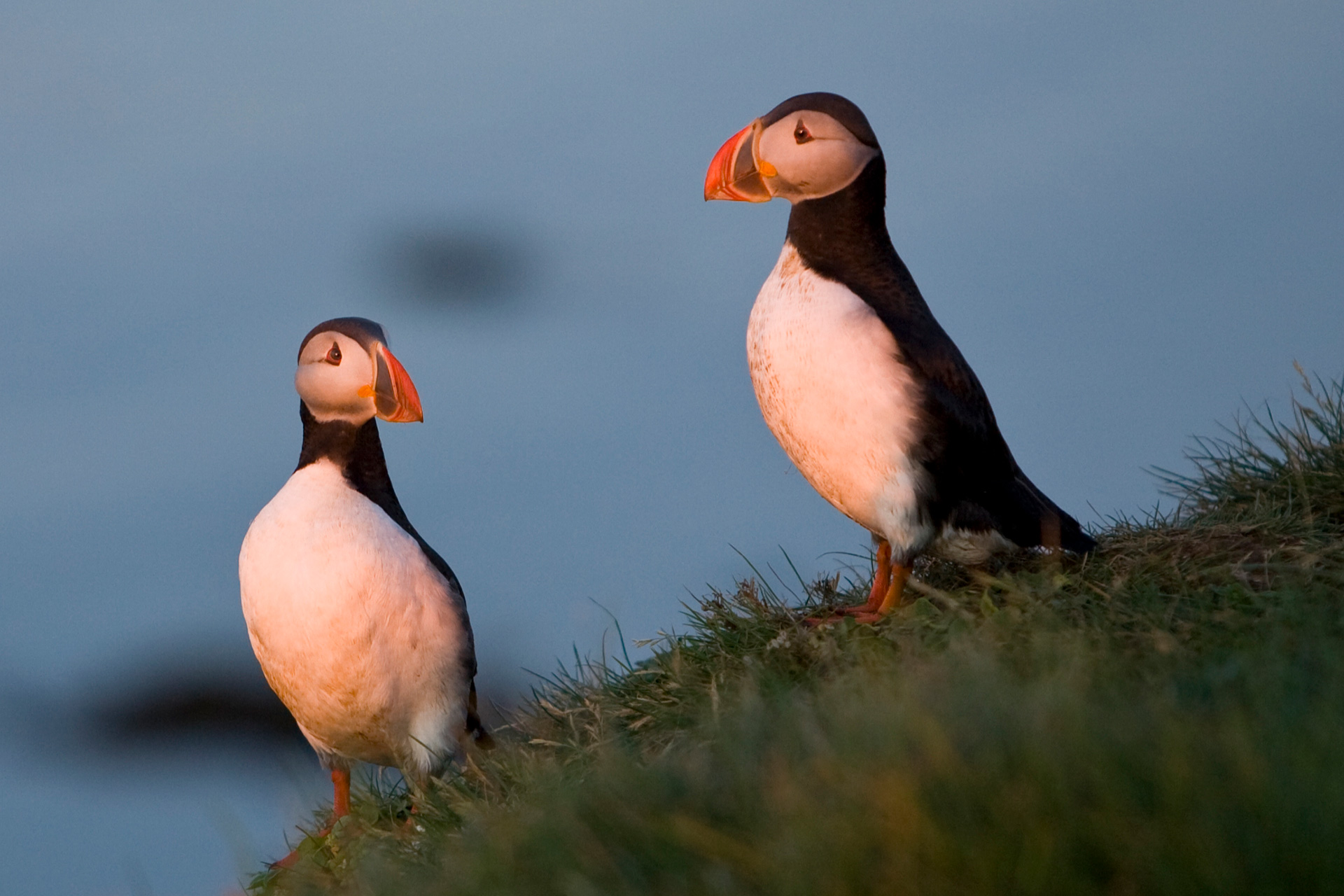

In summer (breeding) plumage, the bill's outer layer – the rhamphotheca – grows in size and turns bright yellow with a dark orange tip. The horned puffin's bill, which is larger than those of other puffin species, is red at the tip and yellow at the base. The cheeks are white, with a yellow wattle at the base of the bill. A dark eyestripe extends backwards from the eye towards the occiput. Sexually mature birds have a small fleshy black "horn" extending upwards from the eye, from which the animal derives its common name - the horned puffin. Horned puffins are monomorphic (the male and female exhibit the same plumage coloration). The height of the adult puffin is approximately 20 cm (8 in), the weight is approximately 500 g (18 oz), and the wingspan is approximately 58 cm (23 in). The Ainu people of Sakhalin call them etupirka, which means "beautiful beak".Ī breeding pair of puffins on a rocky ledge. The Yup’ik of the Yukon–Kuskokwim Delta call the puffin "qilangaq", "qengacuar(aq)" (“little nose”), or "qategarpak" (“large white breast”). It was later extended to include the similar and related Pacific puffins. The Atlantic puffin acquired the name at a much later stage, possibly because of its similar nesting habits, and it was formally applied to that species by Pennant in 1768. It is an Anglo-Norman word ( Middle English pophyn or poffin) used for the cured carcasses. The vernacular name puffin – puffed in the sense of swollen – was originally applied to the fatty, salted meat of young birds of the unrelated species, the Manx shearwater ( Puffinus puffinus), formerly known as the "Manks puffin". Corniculata means “horn-shaped” or “crescent-shaped”, in reference to the black horn above the bird's eye. The binomial name of this species, Fratercula corniculata, comes from the Medieval Latin fratercula, meaning “ friar” their black-and-white plumage resembling the robes of monks.


 0 kommentar(er)
0 kommentar(er)
